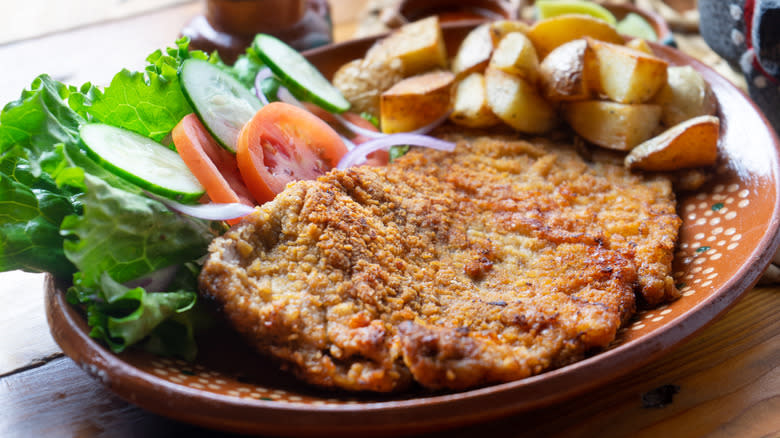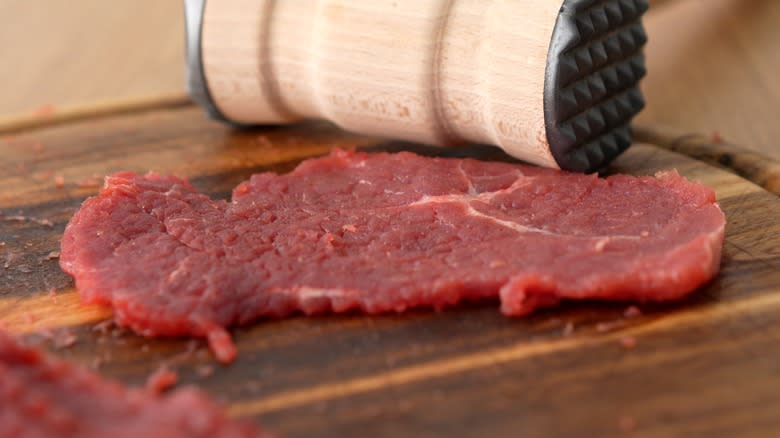The Best Cut Of Meat For Beef Schnitzel

Traditionally schnitzel -- wiener schnitzel, to be precise -- is made from thin cuts of veal. But the technique of breading and frying a thin cut of meat can be applied to any number of proteins, from chicken to pork. Beef, which is just mature veal, makes for a great schnitzel with a deeply savory flavor, but with so many cuts to choose from, many wonder which one is best suited for the job.
Choosing tough, yet flavorful cuts of beef that have been sliced thinly makes for a schnitzel that has pronounced steak flavor along with a satisfying crunch. These cuts not only offer a cost-effective alternative but also allow the rich, savory flavor of the beef to shine through the crispy breading and frying process.
Beef escalope, derived from the shoulder, is a prime choice for schnitzel as its moderate marbling contributes to a robust flavor. This well-worked muscle is often relegated to braising or slow-cooking which renders the fat and connective tissue that studs the meat. But for quick-cooking schnitzel, thin slicing and tenderizing are both a must. Schnitzel is by definition thin and this is more than a visually appealing technique; thin steaks are inherently more tender. Further mechanical tenderizing is also called for when working with flavorful, but tough beef escalopes.
Read more: 13 Underrated Cuts Of Meat You Should Be Grilling
Tenderizing Is A Top Priority

As stated, mastering the art of tenderizing is essential. Thankfully, it's also simple and requires few, if any, additional devices. Pounding the beef escalope with a meat mallet or rolling pin is an effective technique that helps break down the tough muscle fibers. This method not only tenderizes the escalope but also ensures an even thickness, promoting uniform cooking. Another option that can be used in conjunction with pounding is the use of a pinned or bladed tenderizer, such as a Jaccard. These pronged machines pierce the meat, facilitating the further breakdown of muscle fibers.
While the above methods are a must for tender beef schnitzel, there is another method that can be employed to help tenderize the beef escalope even further. As you'll want to salt and season the meat anyway, consider pounding and salting the meat hours before the cooking process. The salt will penetrate the meat and break down muscle fibers while ensuring the beef is thoroughly seasoned. Between this application of salt and any other spices, rest the beef uncovered in the fridge. This will further dry the exterior of the beef and help the breading adhere. Just remember to retrieve the beef from the fridge at least a half hour before breading and frying the schnitzel so it can come to room temperature.
Read the original article on Tasting Table.

